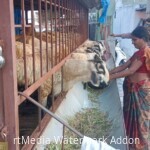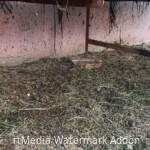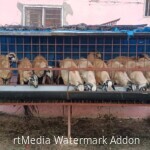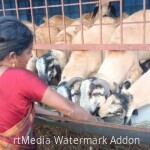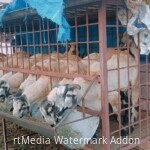Home › Forums › Commons As Culture › Traditional Knowledge, Customs and Practices › From open spaces to confinement: Sheep rearing in India
-
AuthorPosts
-
-
September 5, 2023 at 10:44 am #27363
 NayantaraParticipant
NayantaraParticipantShepherding sheep and goats is one of the oldest and most resilient forms of livelihood to date. This is not just an occupation but very much part of the cultural fabrication of shepherd communities across the world. With this traditional livelihood, comes years of knowledge and experiences that are passed on from generation to generation. It is not just the act of taking sheep and goats to graze but also the planning and preparation of migrating through different landscapes in different seasons, depending on the community. This kind of nomadic lifestyle brings about invaluable experiences and knowledge which makes the community so much more resilient to variability in landscapes and seasons. Not only do the sheep and goats stay healthy because of the diversity in grasses they get to consume, but also play a very important ecological role in maintaining the balance in grasslands by feeding on excess overgrown weeds. Additionally, the manure from sheep and goats is a natural fertilizer and pesticide for the flora in the wild.
However, in recent years it has been seen that newer ways of sheep and goat rearing have been adopted. Mr. Sunil from Madannapalli, decided to earn some additional income and bought around 14 three-month-old kids. Being new to sheep rearing, he decided to stall feed his animals because he felt that it reduced the mortality rate among the animals and earned him a fixed income. According to him, confining them to cages protects them from diseases, resulting in lower chances of contracting illnesses, for example, from common water holes. He also felt that this method saves time and can be easily managed by others in his family. He also adds that all animals receive proper nutrition, resulting in similar growth rates and improved overall care. This contributes to the health and productivity of the flock. Another study (https://www.researchgate.net/publication/342591429_Stall_feeding_of_sheep_and_goats_An_alternative_system_to_traditional_grazing_on_community_lands) further justifies this system of rearing because of the increasing demand for meat coupled with the shrinking availability and quality of grazing resources.
However, one of the main concerns regarding stall feeding systems is the ethical aspect of confining animals to small cages for their entire lives. This raises valid animal welfare concerns, as it restricts natural behaviors and can cause stress and discomfort.
Another disadvantage is the reliance on purchased inputs, such as fodder. This increases the cost of animal husbandry and may result in nutritional deficiencies, potentially impacting the quality of meat produced. Stall-feeding systems also disrupt the ecological connections between animals and their environment. By limiting access to open grazing, the symbiotic relationship between livestock and the ecosystem is disrupted, which can have broader ecological consequences. The close proximity of animals in stall feeding systems can also lead to an increased risk of disease spread within the flock.In reality, this system may be a short-term solution to a deep-rooted long-term problem of declining pasture lands or commons and green fodder production. In order to address the larger problem, common lands which serve as pastures need to be protected, by giving pastoral communities the power to access their rights to govern these resources. It is after all their ancestral knowledge and experience that have met the demands of meat (among other products) production in the past and continue to do so while being stewards of common lands.
Credits- Pictures and data about Mr Sunil from Kaushal
Attachments:
-
-
AuthorPosts
You must be logged in to reply to this topic.

